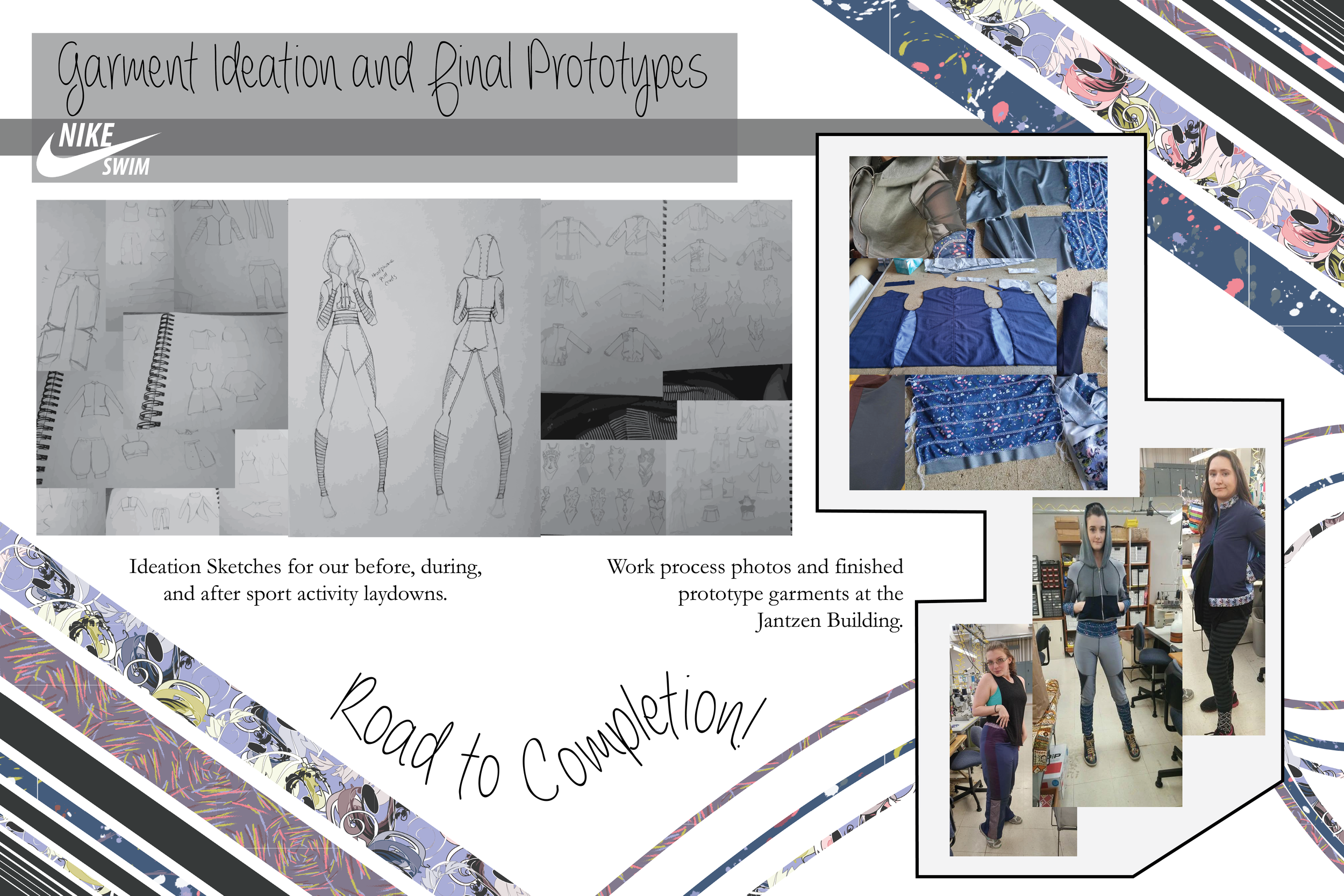NIKE SWIM
This undergraduate group project, developed in collaboration with NIKE Swim, focused on creating "before, during, and after" looks for an aquatic sport. Our team chose Synchronized Swimming and designed a tracksuit, practice swimsuit, swim parka, and recovery compression suit, addressing the specific challenges athletes face with their current gear. All of our research, designs, and prototypes were compiled and presented to NIKE Swim at Jantzen Swimwear for industry feedback.






For this project, my design group conducted an in-depth interview with long-time synchronized swimmer Michelle Miller to gain insights into the culture and specific needs of the sport. In addition to her interview, we performed external research on synchronized swimmers' body types, habits, and regular gear used for both in-season and out-of-season wear. Inspired by this research, we chose Troye Sivan's Blue Neighborhood album as the theme for our designs. We developed three original textile prints for our garments, and our ideation process involved over two hundred sketches and prototypes to refine our final designs.
We identified several issues with current synchronized swimming apparel, beginning with the team tracksuits worn before competitions. Miller reported that these suits become soggy when worn directly after practice and are often too warm during summer competitions. To address these challenges, we incorporated a water-resistant fabric and designed breathable power-mesh panels. For practice and competition meets, synchronized swimmers commonly wear swim parkas and compression practice swimsuits. A key issue we identified with the parkas was the hood becoming sticky from dried gelatin used in swimmer's hairstyles. We resolved this by designing a removable lining in the hoods for easier cleaning.
Finally, recognizing the physical demands of synchronized swimming, we created a muscle compression recovery suit. This suit is designed with a loose fit in the chest for deep breathing, while providing targeted compression in the lumbar spine, wrists, knees, shoulders, and groin—areas where synchronized swimmers often experience injury from the sport's acrobatic movements.




